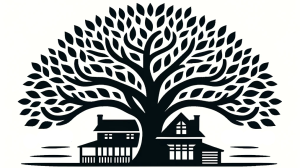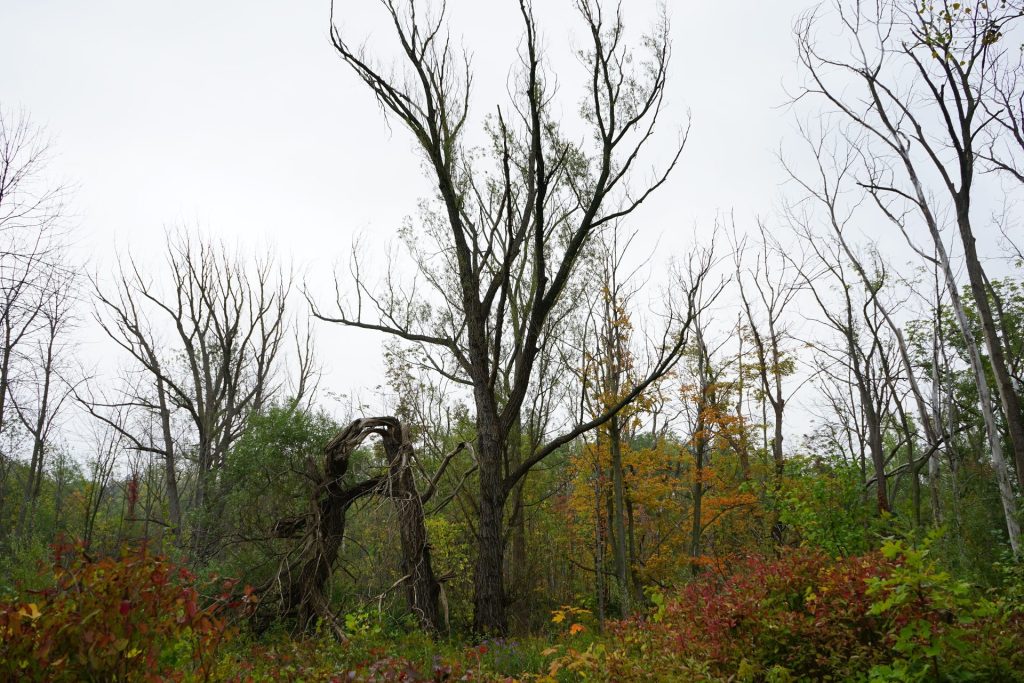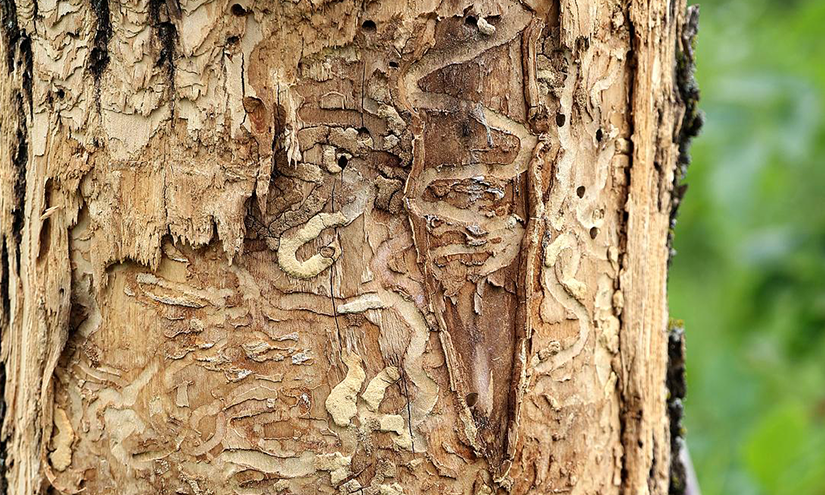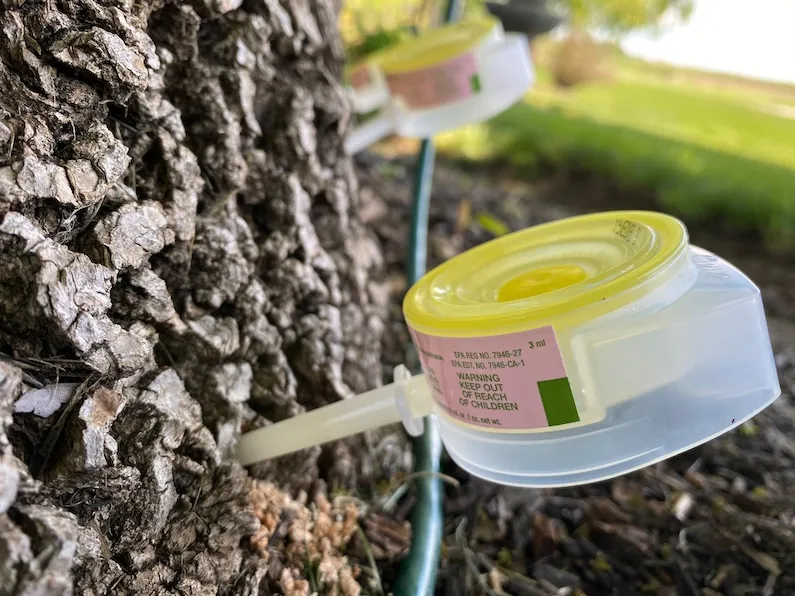The Emerald Ash Borer’s Devastating Impact on North Carolina’s Forests
In the tranquil forests of North Carolina, a sinister invader has been quietly wreaking havoc for years. The emerald ash borer (EAB), a small, iridescent green beetle native to Asia, has left a trail of destruction in its wake, decimating ash tree populations and forever altering the landscape. This invasive pest, first discovered in the United States in 2002, has spread to over 30 states, causing billions of dollars in damage and threatening the very existence of ash trees in North America. The North Carolina Forest Service provides updates on the spread of EAB in the state, management recommendations, and quarantine information.
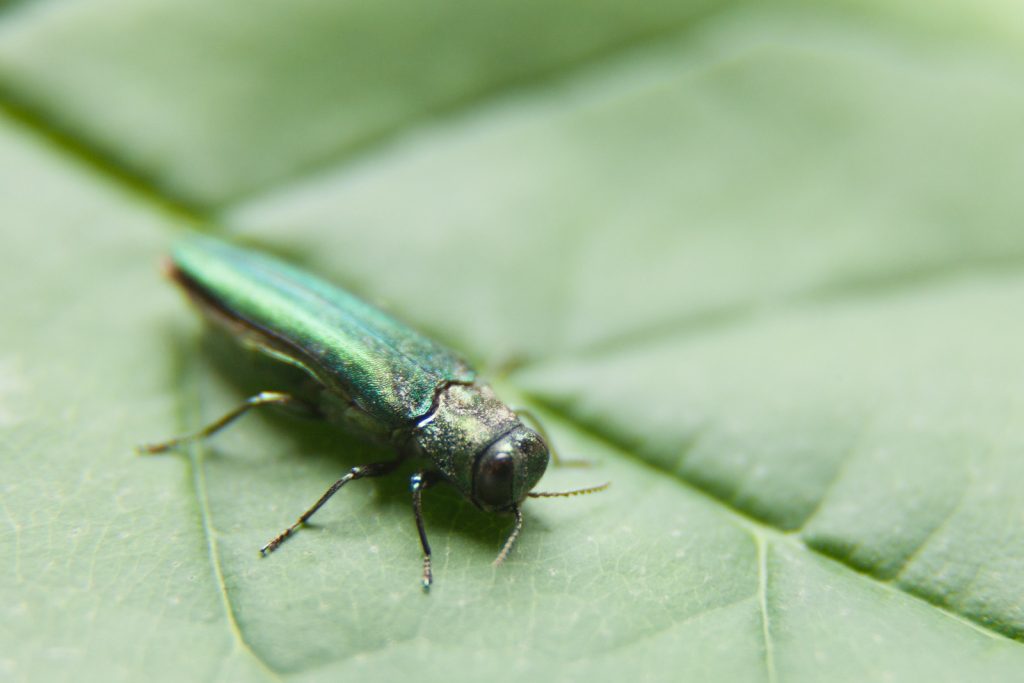
The Biology and Lifecycle of the Emerald Ash Borer: Understanding the Enemy
The emerald ash borer is a deceptively beautiful creature, with its metallic green exoskeleton and copper-colored eyes. However, its appearance belies the incredible damage it can inflict upon ash trees. The adult beetles, measuring about half an inch long, emerge from infested trees in late spring or early summer. After feeding on ash foliage for several weeks, the adults mate and the females lay their eggs in the bark crevices of ash trees. When the larvae hatch, they bore into the tree, feeding on the inner bark and disrupting the tree’s ability to transport water and nutrients.
The lifecycle of the emerald ash borer is typically completed in one to two years, depending on the climate and the health of the host tree. In warmer regions, the beetle may produce two generations per year, while in colder areas, it may take up to two years for the larvae to mature and emerge as adults. Research findings on the life cycle of EAB in North Carolina indicate the pest completes its cycle in one year, which is faster than in cooler climates. This has implications for the timing of biological control measures.
Since its introduction to North America, likely via wooden shipping materials from Asia, the emerald ash borer has spread at an alarming rate. It was first discovered in Michigan in 2002 and has since been found in over 30 states, from the East Coast to the Midwest. Despite quarantine efforts and attempts to slow its spread, the beetle continues to advance, leaving a wake of dead and dying ash trees in its path. Spectrum Local News reports on the continued spread of the emerald ash borer within North Carolina, highlighting the counties recently found to be infested and the threat this poses to ash trees across the state.
The Spread of EAB in North America: A Trail of Destruction
The damage caused by the emerald ash borer is not limited to the death of individual trees. Ash trees play a crucial role in the ecosystem, providing food and shelter for a variety of wildlife species. The leaves of ash trees are a preferred food source for many caterpillars, which in turn provide a vital food source for birds and other animals. The seeds of ash trees are also an important food source for birds and small mammals.
The loss of ash trees can have ripple effects throughout the forest, altering the composition of plant and animal communities and potentially leading to the loss of other species that depend on ash trees for survival. In addition, the dead and dying trees left behind by the emerald ash borer can pose a safety hazard, particularly in urban and residential areas where falling branches and trees can damage property and endanger lives.
The economic impacts of the emerald ash borer are also significant. Ash trees are a valuable hardwood species, used in the production of furniture, flooring, and other wood products. The loss of these trees can have devastating effects on the forest products industry, as well as on the communities that depend on this industry for their livelihoods. In addition, the cost of removing and replacing dead and dying ash trees can be substantial, particularly for municipalities and private landowners.
Spotting the Signs of Emerald Ash Borer Infestation: Early Detection is Key
Identifying an emerald ash borer infestation can be challenging, as the early signs are often subtle. However, there are several key indicators to look for, including:
- Canopy dieback: As the larvae feed on the inner bark, they disrupt the tree’s ability to transport water and nutrients, leading to the death of branches and leaves in the upper canopy.
- Bark splitting: As the larvae tunnel beneath the bark, they create galleries that can cause the bark to split and peel away from the tree.
- D-shaped exit holes: When the adult beetles emerge from the tree, they create distinctive D-shaped exit holes in the bark, about 1/8 inch in diameter.
- Woodpecker activity: Woodpeckers are known to feed on emerald ash borer larvae, and increased woodpecker activity on ash trees can be a sign of infestation.
If you suspect an emerald ash borer infestation, it is crucial to report it to local environmental agencies immediately. Early detection and rapid response are essential for controlling the spread of this invasive pest. Many states have established hotlines or online reporting systems for suspected infestations, and prompt reporting can help to initiate a coordinated response and prevent further spread.
In addition to reporting suspected infestations, there are several steps that individuals can take to help prevent the spread of the emerald ash borer:
- Don’t move firewood: The emerald ash borer can easily hitchhike on firewood and other untreated wood products. By buying and burning firewood locally, you can help to prevent the spread of this and other invasive pests.
- Plant a variety of tree species: Diversifying the tree species in your landscape can help to reduce the impact of any single pest or disease outbreak.
- Support research and management efforts: Staying informed about the latest research and management strategies for the emerald ash borer can help to support ongoing efforts to control this invasive pest. NC State Extension Forestry is a portal to NC State University’s extension resources on forestry, including educational materials and management guides for various forest pests, including the emerald ash borer.
Management Strategies for EAB: Chemical Treatments and Biological Control
Once an emerald ash borer infestation is confirmed, there are several management strategies that can be employed to protect ash trees and limit the spread of the beetle. These strategies fall into two broad categories: chemical treatments and biological control.
Chemical treatments involve the use of systemic insecticides that are absorbed by the tree and distributed throughout its vascular system. These insecticides can be effective in preventing or treating infestations, particularly in high-value or historically significant trees. However, they can be costly and may require repeated applications over several years to maintain their effectiveness. NC State Extension Publications on EAB offer an overview of EAB, including its lifecycle, detection signs, and management strategies. It emphasizes the importance of early detection and the use of chemical treatments and biological control.
Biological control involves the use of natural predators or parasites to control emerald ash borer populations. One promising approach is the release of parasitic wasps that prey on EAB larvae. These tiny wasps, which are native to Asia, have been shown to reduce EAB populations in field trials and are now being released in many states as part of a coordinated biocontrol effort. NC State Extension Publications on Biological Control of EAB provide detailed information on the biological control efforts against EAB in North Carolina, including the use of parasitoid wasps released since 2013 to combat the pest.
Other potential biological control agents include fungi and nematodes that attack EAB larvae, as well as predatory beetles that feed on adult EAB. While these approaches are still in the research and development phase, they offer hope for a more sustainable, long-term solution to the emerald ash borer problem.
Tough Decisions for Ash Tree Owners: To Treat or Remove?
For ash tree owners faced with an emerald ash borer infestation, the decision of whether to treat or remove their trees can be a difficult one. There are several factors to consider, including the age and health of the tree, the severity of the infestation, and the cost and feasibility of treatment.
In general, younger, healthier trees are better candidates for treatment than older, declining trees. Trees that are already showing significant canopy dieback or other signs of advanced infestation may be too far gone to save, and removal may be the best option to prevent further spread of the beetle.
The cost of treatment is another important consideration. While the exact cost will vary depending on the size of the tree and the type of treatment used, it can easily run into the hundreds or even thousands of dollars per tree. For many homeowners and municipalities, this cost may be prohibitive, particularly if multiple trees are affected.
Ultimately, the decision to treat or remove an ash tree will depend on a careful evaluation of the tree’s condition, the available resources for treatment or removal, and the potential risks and benefits of each approach.
Looking to the Future: The Long-Term Outlook for Ash Trees in North America
Looking to the future, the outlook for ash trees in North America is uncertain. While ongoing research and management efforts offer hope for controlling the spread of the emerald ash borer, the reality is that this invasive pest is likely here to stay. The possibility of eradication is slim, given the beetle’s widespread distribution and ability to spread rapidly.
However, there are glimmers of hope on the horizon. Scientists are exploring the potential of natural predators, such as woodpeckers and parasitic wasps, to help control EAB populations. In addition, ongoing research is investigating the genetic resistance of certain ash species or cultivars to EAB attack, which could lead to the development of resistant trees for future planting.
Another area of active research is the use of fungal pathogens and nematodes as biological control agents. These organisms have shown promise in lab and field trials, and could potentially be deployed on a larger scale to help suppress EAB populations.
Frequently Asked Questions About Emerald Ash Borer Management
- Can you burn emerald ash borer wood?
Yes, infested ash wood can be safely burned, as long as it is done locally and in accordance with any local or state regulations. In fact, burning infested wood can be an effective way to destroy EAB larvae and prevent further spread. However, it is important not to transport the wood outside of the infested area, as this can spread the beetle to new locations. - What temperature kills emerald ash borer?
Studies have shown that EAB larvae can be killed by exposure to temperatures of 122°F (50°C) for 20 minutes, or 140°F (60°C) for 5 minutes. These temperatures can be achieved through heat treatment or kiln drying of infested wood. However, it is important to note that these treatments must be carefully controlled to ensure that the entire piece of wood reaches the required temperature for the necessary duration. - Do dead ash trees make good firewood?
Dead ash trees can make good firewood, as long as they are not infested with emerald ash borer. If the tree has been dead for more than a year, any EAB larvae present will likely have already emerged as adults. However, if the tree has only recently died or is showing signs of infestation, it should be burned locally to prevent further spread of the beetle.
A Call to Action for Protecting North Carolina’s Ash Trees
The emerald ash borer is a formidable foe, but one that we cannot afford to ignore. By working together to raise awareness, implement effective management strategies, and support ongoing research, we can help to protect our ash trees and preserve the ecological integrity of our forests for generations to come.
This will require a sustained, collaborative effort from all stakeholders, including government agencies, environmental organizations, and private landowners. It will require us to think creatively and adaptively, to embrace new technologies and approaches, and to remain committed to the long-term health and resilience of our forests.
Ultimately, the story of the emerald ash borer is not just about a single invasive pest or a single species of tree. It is a story about the interconnectedness of our ecosystems, and the ripple effects that can occur when one piece of the puzzle is removed. It is a story about the importance of stewardship, and the responsibility we all share to protect and preserve the natural world around us.
In the face of this challenge, it is easy to feel helpless or overwhelmed. But every individual has a role to play, whether it is by reporting suspected infestations, supporting research and management efforts, or simply spreading the word about the importance of protecting our forests.
Additional Resources for Learning More About the Emerald Ash Borer
For those interested in learning more about the emerald ash borer and ongoing efforts to control its spread, the following resources may be of interest:
- Emerald Ash Borer Information Network
This website, maintained by the USDA Forest Service and Michigan State University, is a comprehensive source of information on the biology, distribution, and management of EAB. - Emerald Ash Borer University
This online course, developed by Michigan State University and the USDA Forest Service, provides in-depth training on EAB biology, identification, and management for professionals and interested citizens. - “Biology and Control of Emerald Ash Borer” (USDA Forest Service Publication FHTET-2014-09)
This comprehensive manual provides detailed information on the biology, ecology, and management of EAB, including the latest research and management strategies. - “Emerald Ash Borer and Ash Trees: Ecology, Impacts, and Management” (Forestry Science Review, Vol. 3, No. 1, 2021)
This special issue of the journal Forestry Science Review features a collection of articles on the latest research and management strategies for EAB, written by leading experts in the field.
By staying informed and engaged, we can all play a part in protecting our forests from the threat of the emerald ash borer and other invasive pests.
